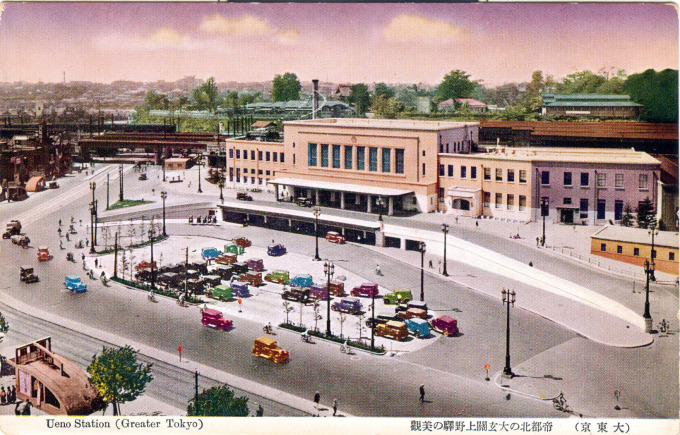
Ueno Station, c. 1930, with Ueno Park in the distance. Lower-left is a subway entrance leading to the Ginza Line, Tokyo’s first subway, completed in 1927.
See also:
Ueno Station, c. 1910-1920
Tokyo “Black Market”, c. 1945
“If people are but players, making their exits and entrances, Tokyo’s Ueno Railway Station is the ideal stage for the drama.”
– Japan Graphic, 1984
- I. Aerial view, Ueno Station and Ueno Park, c. 1940.
- Ueno Station, aerial view, c. 1940.
The 1923 Great Kanto earthquake radically changed Tokyo’s architectural landscape. The capital lost many landmarks (e.g., the towering Ryounkaku (Twelve-Storeys Tower) of Asakusa). The city also lost three railway terminals that served as entry ways into the city: Shimbashi, from the south; Manseibashi, from the west; and Ueno, for travelers arriving from the north. Manseibashi and Shimbashi would be rebuilt as commuter stops, with Tokaido and Chuo main line service terminating at Tokyo Central Station. Only Ueno Station would be rebuilt as a terminal.
Gutted by fire during wartime bombing in 1945, Ueno Station would be reconstructed during the Occupation. Outside, nearby, would be a flourishing black market that came to be known colloquially as Ameyoko [American Alley], where surplus (and stolen) American goods could be bought.
“The most famous journey in modern Japanese writing starts at Ueno Station in northeast Tokyo and ends in ura nihon [‘hidden Japan’]. ‘The train came out of the tunnel in snow country,’ Yasunaru Kawabata began his best-known novel. Every Japanese understands this simple sentence.
“Snow Country records a passage between two worlds. Its protagonist is a modern Japanese completely detached from his life in Tokyo – a dance critic would has never attended a ballet. At a hot spring in the cold, remote mountains a geisha opens the door upon a life of natural ease and intimacy.
“… Written over a long period in the 1930s and 1940s, Snow Country derives its power from the impenetrable barrier it depicts: the inaccessibility of the past – a past that Kawabata mourned on behalf of many modern Japanese.”
– Japan: A Reinterpretation, Patrick Smith, 1997


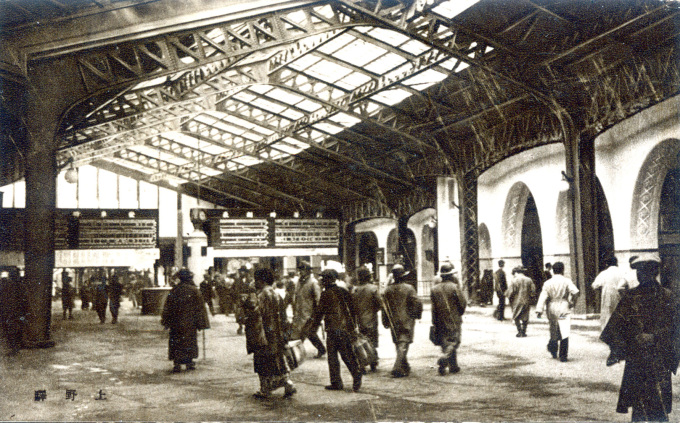
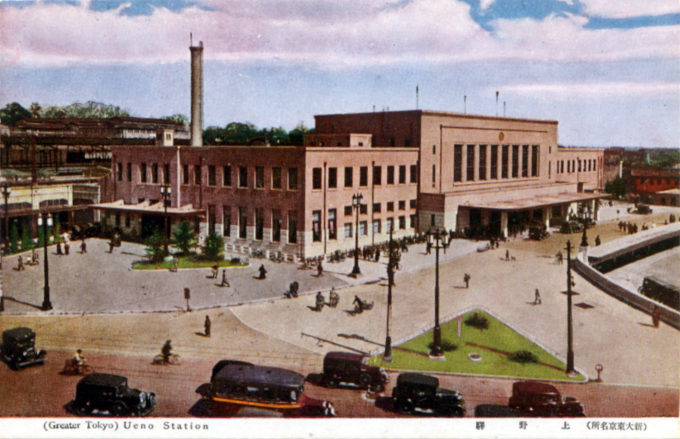
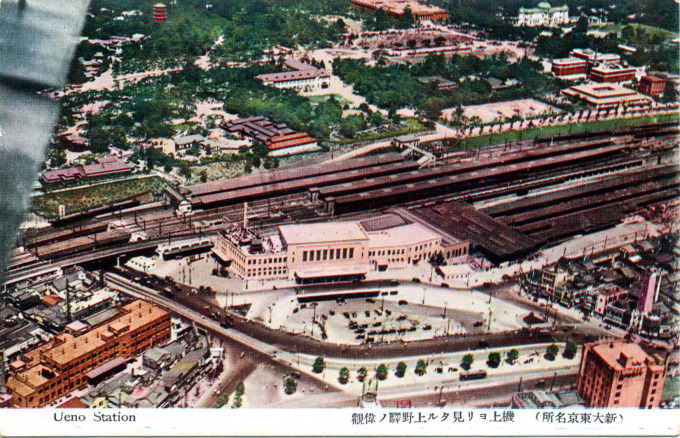
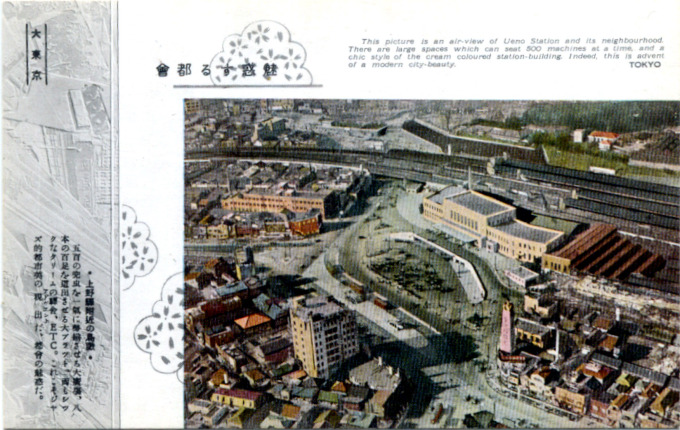
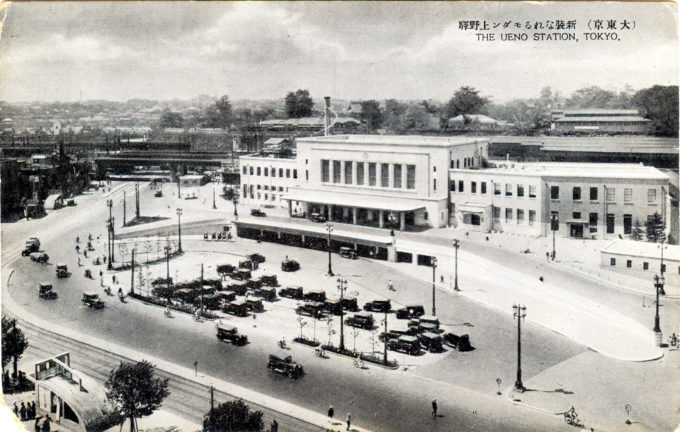
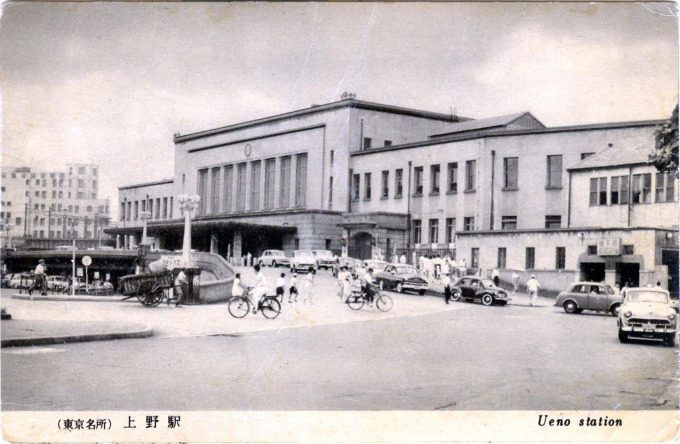
Pingback: Ueno Station, c. 1910. | Old Tokyo
Pingback: Akihabara Station, Tokyo, c. 1935. | Old Tokyo